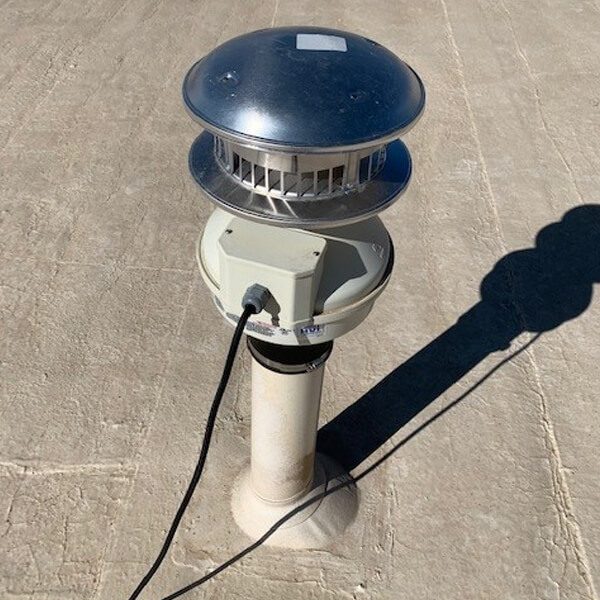How Does Radon Mitigation Work?
Before we discuss the maintenance requirements, it’s important to understand how a radon mitigation system works, specifically active radon mitigation. In the simplest sense, an active radon mitigation system works by using an electric fan connected to a series of pipes to depressurize the soil beneath your property, extracting radon gas before it can enter your home or business. To effectively extract and vent radon from the soil, the fan is designed to run continuously 24/7 to maintain constant proper depressurization of the soil beneath your property.
The two most common methods of radon mitigation are sub-slab depressurization and sub-membrane depressurization. For sub-slab depressurization, the extraction pipe is installed through the concrete slab or basement floor. For sub-membrane depressurization, the extraction pipe is installed through a specialized membrane separating the exposed crawl space from the rest of the property. There are also passive systems, such as soil gas collector mats, that are installed during the construction phase which help enhance the effectiveness of active systems.
Do Radon Mitigation Systems Require Maintenance?
When installed properly by a licensed radon contractor, such as our NRPP certified radon measurement professionals, radon mitigation systems usually require very minimal maintenance. However, much like a chimney or HVAC, occasional maintenance is necessary to ensure your system continues running as intended. While there are many components to a radon mitigation system, the most important aspects that require maintenance are the fan and system monitor:
Routine Radon Testing
While checking your system monitor periodically is a good way to verify that your mitigation system is functioning properly, the only sure way to know is through testing. When a radon mitigation system is functioning properly, it should be reducing indoor radon levels almost entirely. However, if any aspect of the mitigation system has been damaged, obstructed, or malfunctioning, it may not be able to create proper depressurization beneath the soil, resulting in radon levels increasing.
The EPA recommends homeowners have their homes tested for radon at least once every two years. However, if you are getting any warnings from your system monitor or have made any modifications to your home, it is highly recommended you have your property tested. Our NRPP-licensed and certified Radon Measurement Professionals will not only test your home for radon, but will also perform a thorough multi-point inspection of your radon mitigation system!
